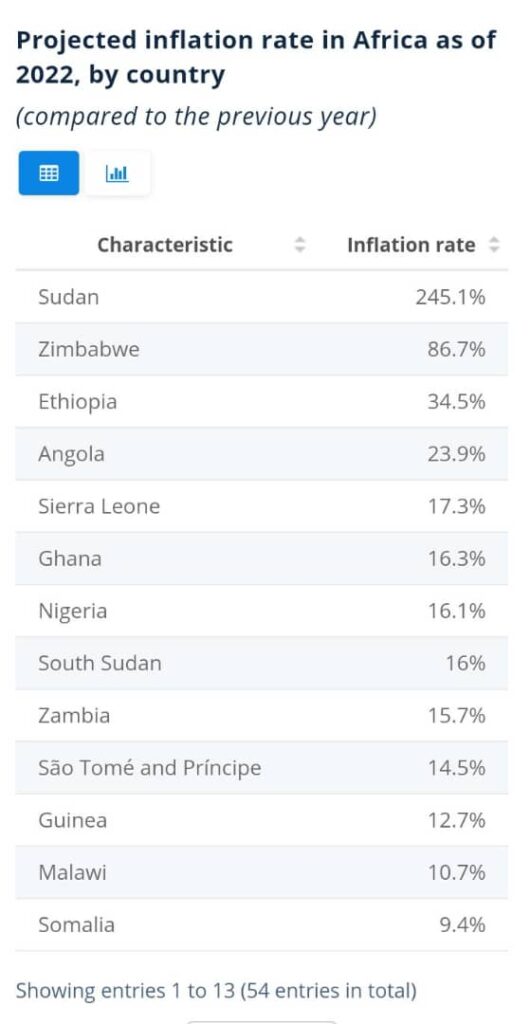
Sudan had the highest inflation in Africa as of 2022. The rate reached roughly 245 percent, according to estimates. Inflationary pressures in the country have been driven by a long-running economic crisis and political instability. By the end of 2021, the already fragile Sudanese economy suffered again when military forces took control of the government. After Sudan, Zimbabwe presented the second-highest inflation on the African continent, averaging 90 percent. Although still high, the rate shrank compared to previous years. With a long history of hyperinflation, Zimbabwe struggles with extremely volatile price levels. In 2020, the country’s inflation rate rose to over 500 percent.
Africa’s inflation set to rise in 2022
Increases in consumer prices vary widely among countries in Africa. However, rising inflation is a shared trend on the continent. As of 2022, the overall inflation rate in Sub-Saharan Africa is expected to grow to 12.2 percent. The surge follows a global tendency, as consumer prices soar all over the world, impacting advanced as well as emerging and developing economies. Although inflationary pressures do not have uniform causes, few common drivers have been pushing prices up in different countries. Economies worldwide still deal with supply disruptions caused by the coronavirus (COVID-19) pandemic. Additionally, the Russian invasion of Ukraine has led to spiraling energy and food prices.

International issues aggravate spike in food prices
Before the Russia-Ukraine war, food prices on the African continent were already affected by harvest issues and trade restrictions due to the COVID-19 outbreak. As of November 2021, food inflation in Sub-Saharan Africa stood at 11.7 percent. By comparison, the rate was measured at 6.9 percent in November 2019. Amid the war in Central and Eastern Europe, prices have risen even further, as Russia and Ukraine are major wheat suppliers to Africa. The reliance on Russian and Ukrainian wheat imports varies among African nations but is above 30 percent in most of them. Benin, for instance, imported all its wheat from Russia, while imports to Somalia originated almost solely from Russia and Ukraine.





